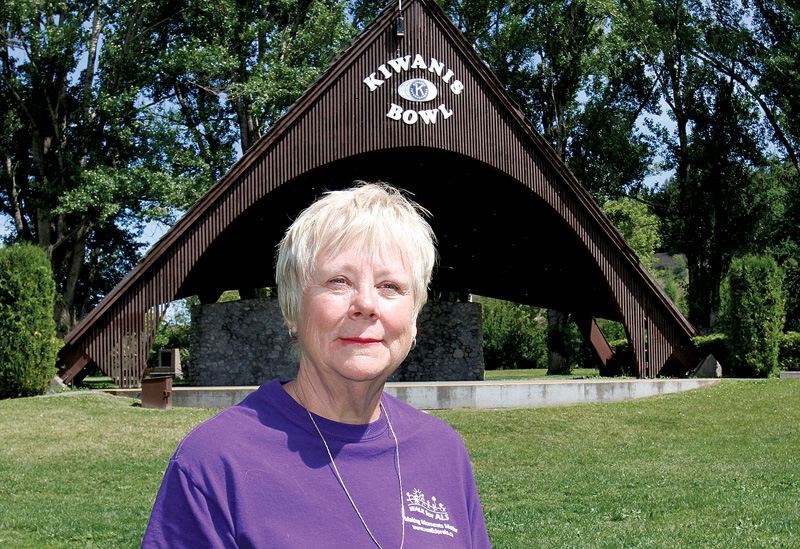The mind stays sharp while the body slowly loses muscle control.
Sharon Cairns, a local retired teacher and school administrator, has seen it happen.
Cairns mother, Annie Ruth McInnes, died eight months after being diagnosed with ALS.
She was just 49 years old.
There are about 3,000 Canadians who have amyotrophic lateral sclerosis, better known as Lou Gehrig's disease. It's caused by the death of motor neurons, which connect the brain to the muscles. It's a progressive neurodegenerative disease that affects nerve cells in the brain and the spinal cord. The average life span for someone diagnosed with ALS is three to five years.
Cairns invites everyone to join in Prince George's 11th Annual Walk for ALS to raise awareness and funds on Sunday, beginning with registration at 10 a.m. at the Kiwanis Bowl in Fort George Park.
"I was 23 when my mom passed away from ALS when she was 49," said Cairns. "She was diagnosed in January and died in August and it started with a weakness in her arms and then in her legs."
Cairns said, at the time, not a lot was known about ALS and it seemed to be sporadic, meaning there was no known reason for getting the disease.
"We did a lot of research at the time but not a lot was known about it so we thought it was sporadic because 90 to 95 per cent of all ALS cases are sporadic," said Cairns. "Then in 2011 my cousin was diagnosed and he didn't tell us until he was tested for the gene."
Knowing Cairns' mom had the disease, there was now a genetic connection between family members.
"And he had the gene," Cairns said of her cousin Jim Hunter, who was 56 at the time of his diagnosis.
About five to 10 per cent of all ALS cases are inherited. Another 20 per cent of family-related cases result from mutations in the gene, which encodes the enzyme copper-zinc superoxide dismutase 1, known as the SOD1 gene.
"SOD1 was identified in 1993, 20 years after my mom passed away, that was when they were finally able to identify one of the genes and in the succeeding nine or 10 years they have discovered two or three other genes that cause ALS," explained Cairns. "The year after my cousin was diagnosed my aunt, my sister's mom, Wilma Hunter, was diagnosed and died within six months."
Each family member who carries the SOD1 gene then has a 50 per cent chance of getting the disease. Some members of Cairns family have been tested but only Jim and Wilma got the results.
It's recommended that people get the testing done but not to get the results. The knowledge of having the gene can weigh heavily on a person's mind, so Cairns decided to take the advice of doctors and not get results since she's past her child-bearing years.
"If I don't come down with it, it's unlikely my children would have it and then it won't be passed along to my grandchildren," said Cairns.
The ALS Walk offers a couple of options for participants. There's a diamond shaped walk within the park, or a walk along the river bank. After the walk there's a concession available for lunch or participants can bring their own and then there's team kick baseball after lunch. Proceeds raised from the walk will see 60 per cent go to people with ALS and 40 percent go to research.
For more information about the Prince George Walk for ALS please e-mail [email protected] or visit www.als.ca.



